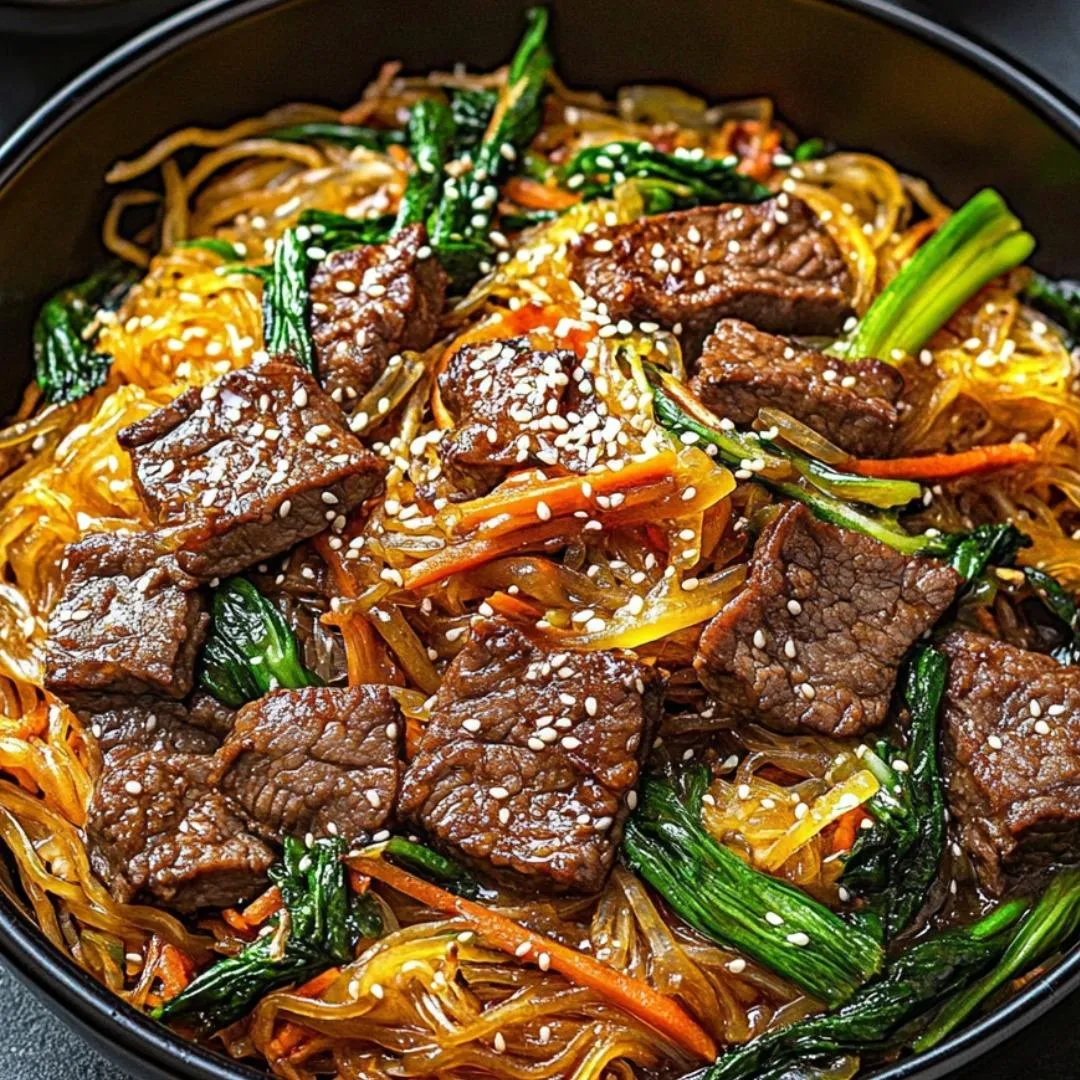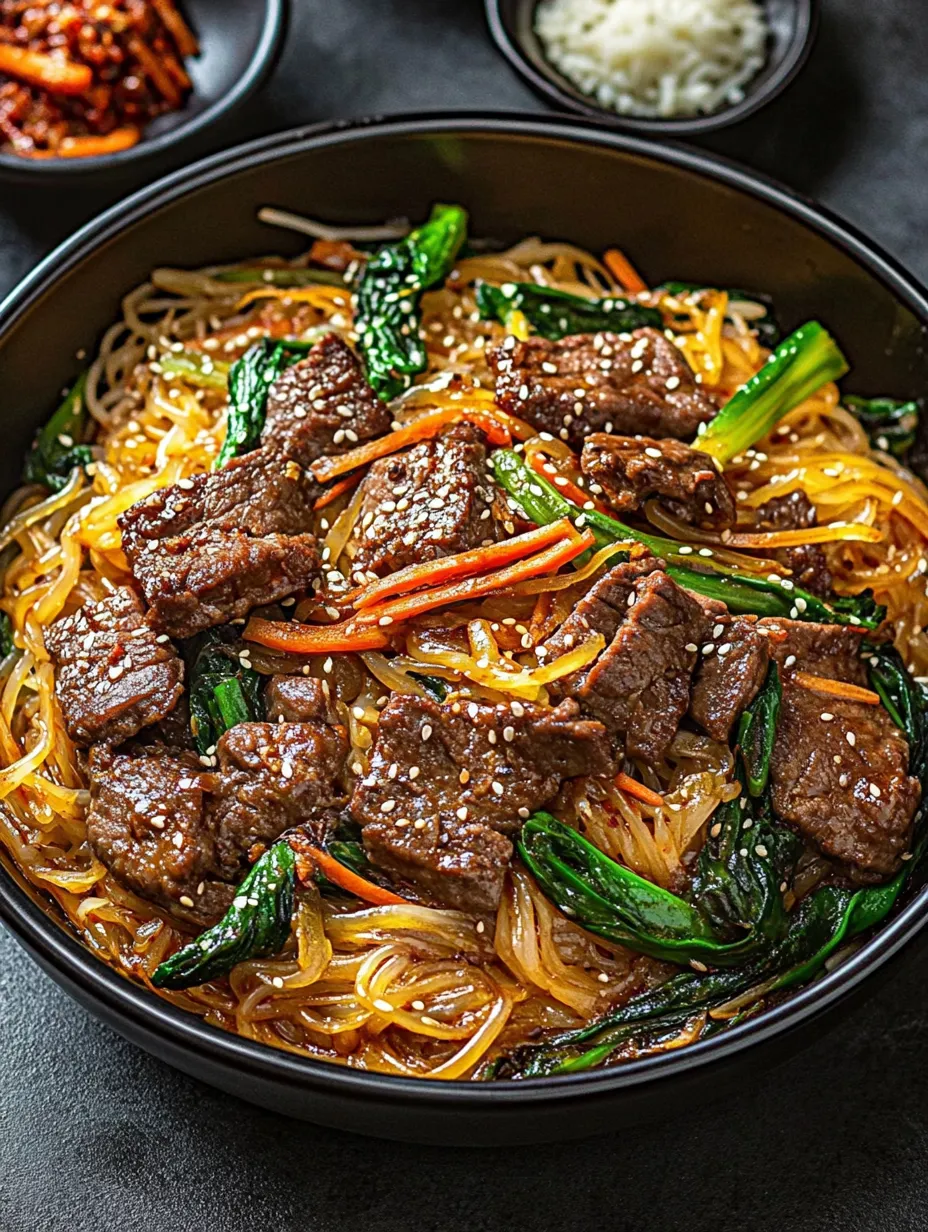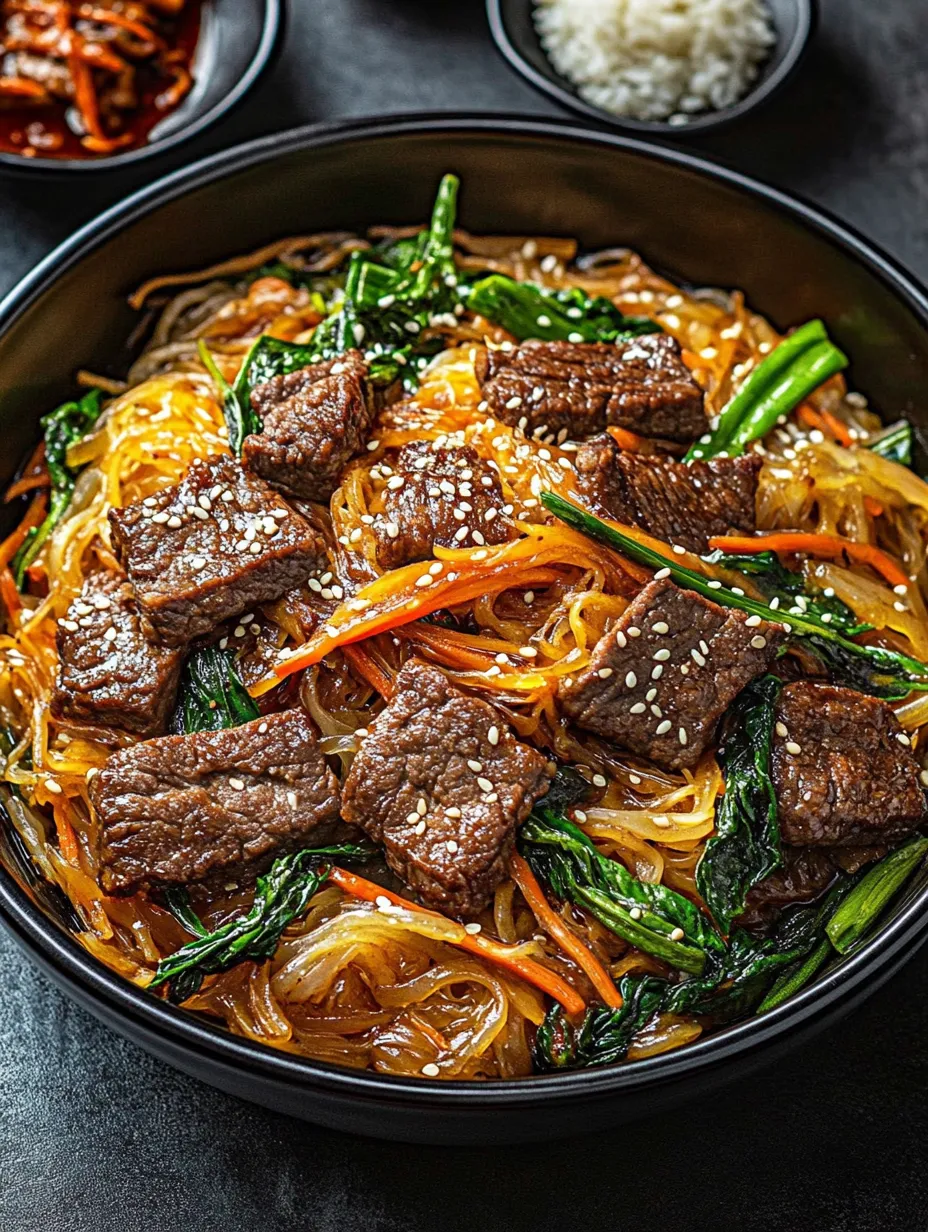 Pin it
Pin it
Japchae is the dish I pull out whenever friends or family need a touch of comfort and celebration all at once. With bouncy glass noodles, tender beef, and a mix of colorful vegetables, its flavor always brightens the table and makes everyone reach for seconds. The blend of sesame oil and soy sauce is truly soul-soothing, and the leftovers are even better the next day.
The first time I made Japchae for a potluck everyone asked for the recipe and now it is a requested favorite for family celebrations and quiet nights at home.
Ingredients
- Thin-sliced beef: Choose a well-marbled cut for tenderness and flavor or swap for tofu chicken or shrimp for flexibility
- Korean sweet potato noodles: These give Japchae its signature chewy bite They hold sauce beautifully and can be found at Asian markets
- Carrots: Fresh and julienned add a sweet crunch to balance the savory notes
- White onion: Thinly sliced for mild sweetness seek out firm shiny bulbs
- Green onions: Chopped for a crisp fresh finish especially flavorful if added at the end
- Garlic Cloves: Minced for a fragrant savory base use fresh cloves for the best aroma
- Spinach Leaves: Wilt quickly for nourishment and color choose young tender spinach
- Sesame oil: Toasted variety brings rich nutty character look for golden color and strong aroma
- Olive oil: Used for sautéing ingredients chooses extra virgin for best flavor
- Soy sauce: Adds saltiness and umami opt for low-sodium or tamari for gluten free
- Brown sugar: Gives the subtle sweetness that balances the savory layers use soft moist sugar
Step-by-Step Instructions
- Prepare the Noodles:
- Boil water in a large pot with a splash of olive oil and add the sweet potato noodles Boil about six minutes until just tender then drain and rinse under cool water Set aside to prevent sticking
- Sear the Beef:
- Heat a skillet over high and add the sliced beef Sprinkle on half the soy sauce sesame oil and brown sugar as it cooks Stir constantly until nicely browned and caramelized then remove from heat
- Sauté the Vegetables:
- Add olive oil to another pan and toss in the julienned carrots and onions Stir and cook over medium until the veggies turn soft and glossy Pour in the remaining soy sauce sesame oil and brown sugar stir to combine
- Build the Flavor Base:
- Add the garlic and green onions to the veggies Cook for just a minute to release their aroma and get a light golden color
- Add Spinach and Combine:
- Toss in the spinach leaves stir until wilted bright green and tender This takes about one minute Add all veggies and beef to the cooked noodles
- Finish and Toss:
- Transfer everything to a large bowl Use clean tongs or your hands to toss gently but thoroughly until noodles get glossy and everything is evenly distributed Garnish with extra green onions
 Pin it
Pin it
Japchae is truly special to me because of the sweet potato noodles which are unlike any other They soak up the rich sesame flavor and I remember my grandmother teaching me to always toss them while still warm for the very best texture The entire process brings back memories of laughter in the kitchen with my cousins
Storage Tips
Japchae keeps beautifully Store leftovers in a tight container in the fridge for up to four days When reheating a quick toss in a hot pan with a little splash of water or sesame oil brings the noodles back to life You can also enjoy Japchae cold as a light lunch
Ingredient Substitutions
If you cannot find Korean sweet potato noodles try using mung bean or rice noodles instead For vegans choose tofu or mushrooms in place of beef Tamari works well for a gluten free swap and coconut sugar is a delicious alternative to brown sugar
 Pin it
Pin it
Serving Suggestions
Japchae stands alone as a complete meal but also pairs well with kimchi grilled meats or steamed rice For gatherings serve it platter-style sprinkled with sesame seeds and extra chopped scallion For a spicy twist add a teaspoon of gochujang to the final toss
Cultural Context
Japchae was originally a royal dish enjoyed in the Korean court Its popularity grew because of its versatility and festive look While traditionally served at holidays and celebrations it has become a beloved everyday comfort food all across Korea
Frequently Asked Questions
- → What type of noodles are used in japchae?
Japchae is traditionally made with Korean sweet potato glass noodles, also known as dangmyeon, which give the dish its signature chewy texture.
- → Can I substitute the beef in japchae?
Absolutely! Chicken, tofu, or shrimp are great alternatives and blend well with the sauce and vegetables commonly used in japchae.
- → How do I achieve the best noodle texture?
Boil the glass noodles until just tender, about 5-6 minutes, then drain and toss lightly with oil to prevent sticking before stir-frying with other ingredients.
- → What vegetables pair well in japchae?
Carrots, spinach, onions, and green onions are commonly used, but bell peppers, mushrooms, or zucchini can also be added for extra flavor and color.
- → What seasonings make japchae special?
A combination of soy sauce, sesame oil, brown sugar, and garlic create the iconic sweet and savory depth that characterizes japchae.
- → Is japchae served hot or cold?
Japchae can be enjoyed either warm or at room temperature, making it versatile for both main dishes and party platters.
